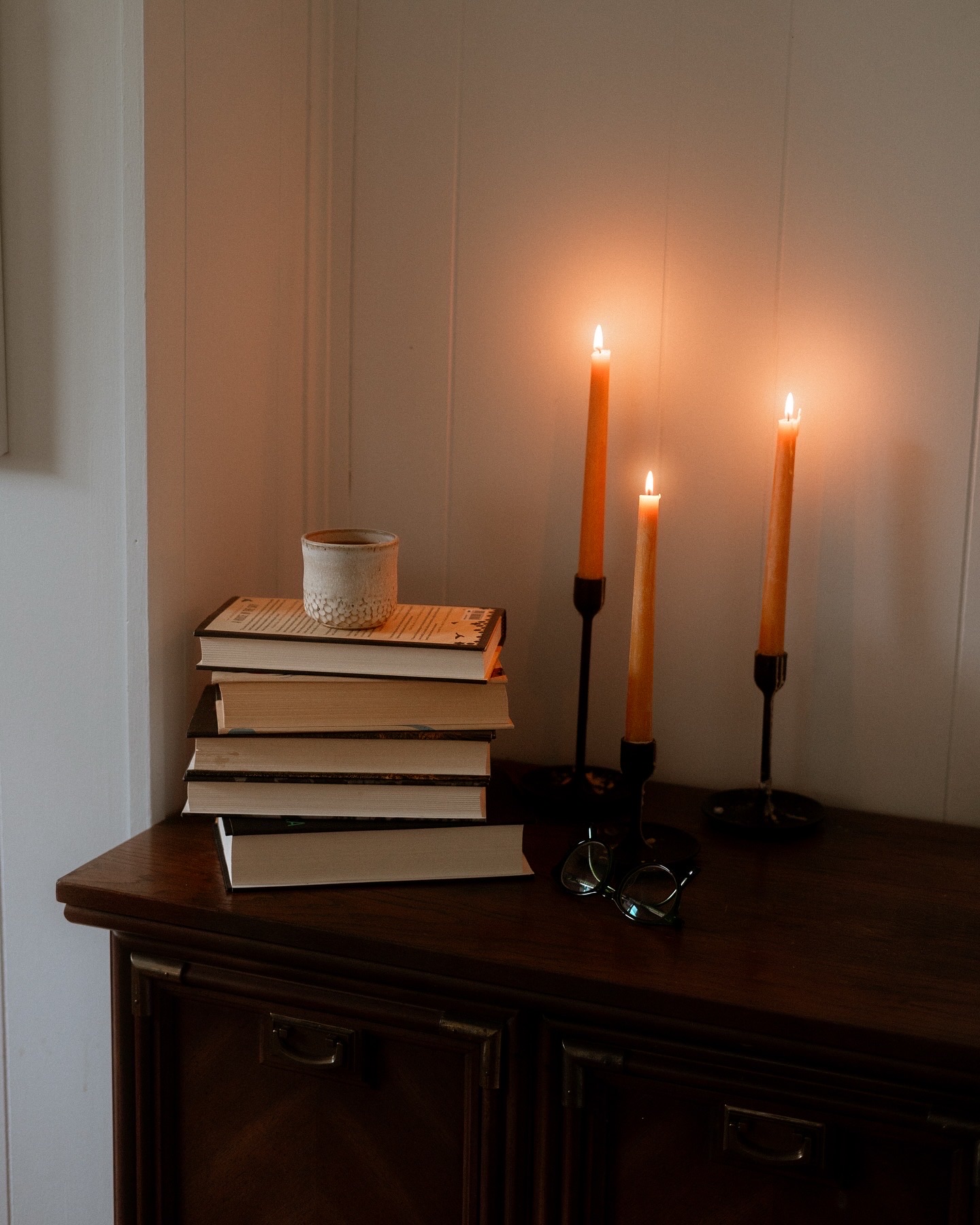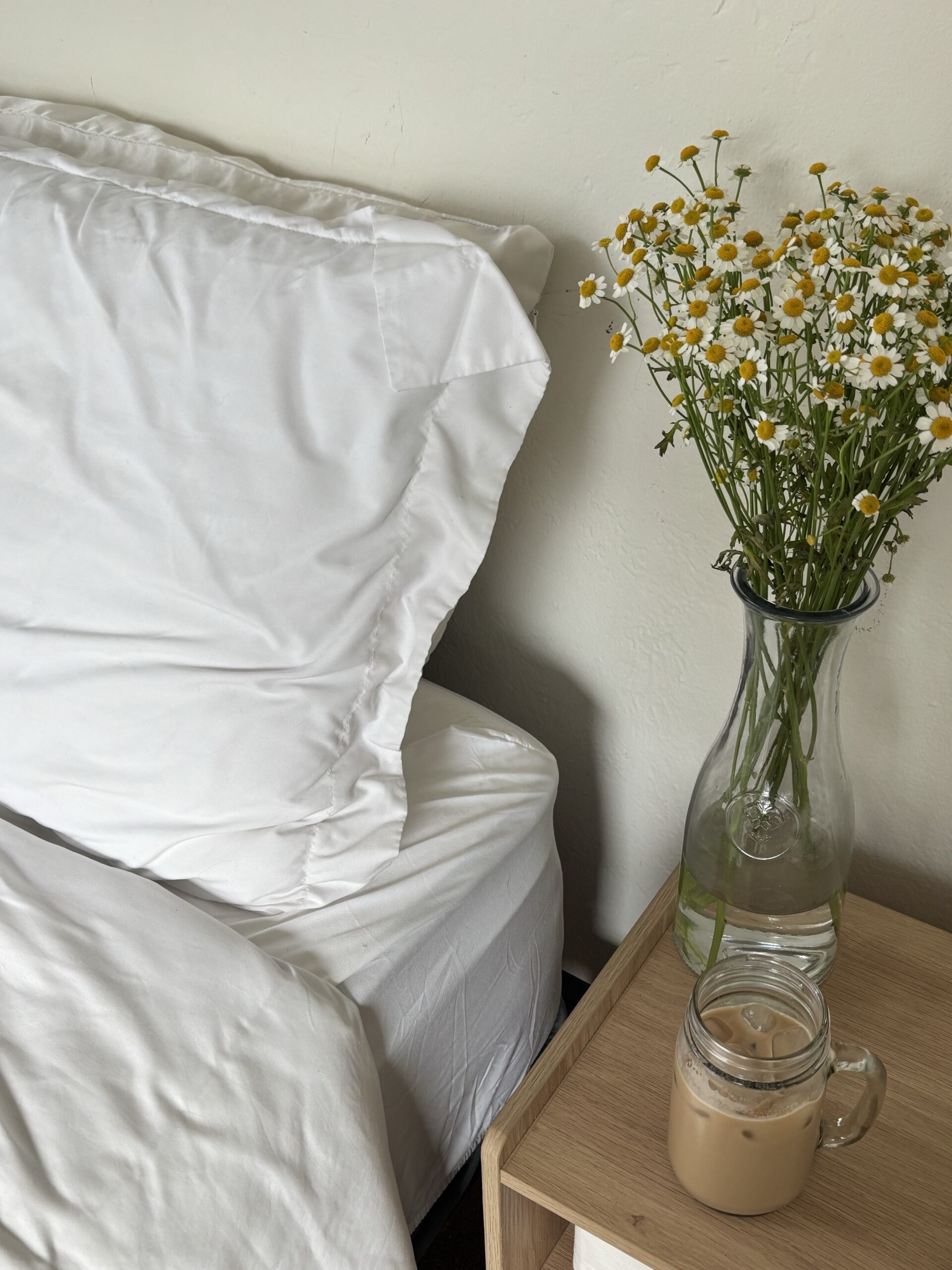ME
NU
Word from Home
I'm Stephanie
You’ve arrived! Welcome to The Everywhere Girl, a slow living blog that helps you cultivate a sense of home in any space or season. I’m Stephanie, resident writer, chronic wanderer, and hospitality enthusiast. I’m so glad you’re part of the community.
My love letter to home. These notes come to you from across the continent, across the globe, and across the hall.
Steeped in faith, literature, and self-discovery, they’re my way of finding home within myself, and with all of you.
The Lost Art of Sabbath Rest: How to Reclaim It from Hustle Culture

Posted In
October 22, 2025
Posted On
In a world obsessed with hustle and productivity, there’s no better time to reclaim the lost habit of Sabbath rest. This is your New Testament-era, judgement-free guide to syncing with God’s creation in rhythms of work and rest.
I’ll admit that I’ve had really mixed feelings about Sabbath rest. I grew up in a small town where the main driver behind quiet Sundays was Christian performance. As an adult, I’ve distanced myself from that mindset, not having any strong opinions about what I should or shouldn’t do on Sundays.
Last year was the first time I really started to rethink the Sabbath. It wasn’t because I felt any sort of Sunday responsibility, but because I felt really burnt out. I was working a lot of weekends and realized that if I didn’t take intentional breaks, they simply wouldn’t happen.
So that’s when I thought, “Maybe I’ll try resting on Sundays.”
And then I proceeded to fail miserably.
I often fought depression on Sundays because I didn’t have any work to occupy my mind. Or, I would feel stressed about the idea of doing nothing when there was so much on my to-do list. As a self-proclaimed high achiever, I didn’t know how to exist in that slow space.
…Which probably means I really needed that sabbath rest, right?
My entire perspective shifted when I was invited to celebrate Passover with some Jewish friends. That’s when I finally understood Sabbath and made it an active (and joyful) part of my week.
Chapters
- Since Jesus Fulfilled the Law, Is the Sabbath Relevant?
- Wait, Doesn’t God Want Us to Work?
- Elements of the Traditional Shabbat
- Reclaiming the Sabbath Gave me a Rich Understanding of the Gospel
- How to Reclaim Sabbath Rest for Yourself
- God Made Rest a Part of the Earth’s Rhythm

Since Jesus Fulfilled the Law, Is the Sabbath Relevant?
Well, yes and no. When Jesus fulfilled the law, He became our rest. So, instead of setting aside a certain day to refresh, it’s our job to find our restoration in the Holy Spirit constantly. Physically, emotionally, spiritually, mentally, rest is always accessible through Jesus. Finding His rest, even in moments of chaos and darkness, is a much higher calling than a Sunday-morning Sabbath practice.
This means no one’s allowed to judge what you do on Sunday mornings. We have no commitment to the law anymore, simply to Christ. But as a centuries-old tradition commanded in the Torah, there’s so much symbolism and weight to Sabbath practice, too. It’s not something we should just toss out or consider irrelevant. In fact, rhythms of labor and rest are prevalent throughout all of creation — and they point us to Him. Ultimately, the Sabbath is a symbol of the complete rest we’ll one day experience with Christ in His new heaven.
Wait, Doesn’t God Want Us to Work?
In one of my favorite books, Do Nothing by Celeste Headlee, the author unpacks a common Protestant viewpoint: God’s highest calling on humanity is work. Scriptures like 2 Thessalonians 3:10 (“If anyone is not willing to work, let him not eat”), and Genesis 2:15 (“God took the man and put him in the garden of Eden to work it and keep it”) are quoted in support of this idea.
But the traditional practice of Shabbat (the fourth commandment in Exodus) directly contradicts this. In fact, the Sabbath is supposed to be a refuge from work and a space where we meet God in an entirely different way. When we strip away hustle culture and the perspective that we exist to work, we’re forced to meet Jesus in a different space — one where He loves us for who we are, not what we do. It’s a radical practice where we come face-to-face with His complete acceptance of us.
Elements of the Traditional Shabbat
My Sabbath breakthrough came when I started using elements of the traditional practice, not the modern version. In modern Christianity, we set aside Sunday (“the Lord’s Day”) for church service and a Sunday nap. We might avoid the corporate office, but work is still often a part of the day — especially for women, who prepare football snacks and Sunday dinner.
The traditional Sabbath (or Shabbat) is a bit different, and it’s steeped in imagery that points to Christ. It starts on Friday evening at sundown and ends on Saturday evening. It’s treated like a small sanctuary from the busyness of life, and it’s welcomed with a candle ceremony and prayer.
Start and end at sundown
The Shabbat ceremony begins right before sundown on Friday evening. This is because the traditional Jewish day starts at sunset (not at sunrise), corresponding with the creation story. I find it so much easier to begin Sabbath practice at this time. It connects me with nature and my circadian rhythm, and I’m already in the mindset to rest as the sun goes down. It reminds me that God welcomes a new day with rest before work, too. And that feels special and intentional to me.
Candle lighting ceremony
Traditionally, candles are lit to usher in the sanctuary of Shabbat. A prayer is spoken, too, that goes something like this: “Blessed are you, O God of the universe, who sanctified us with the commandments to light the Shabbat candles.”
Did you catch that? He sanctified us with the commandments, like the Sabbath practice, before He sanctified us with His Son. For thousands of years, this tradition held the space for our righteousness before Christ came to do it Himself.
Although I love the traditional prayer, I’ve replaced it with my own versions on occasion. For example, “Blessed are you, O God of the universe, who sanctified us with His son and commanded us to light the Shabbat candles.”
I love this practice, since lighting the candle physically separates the space between work and rest. Once the candle is burning, I’ve exited the chaos of daily life and entered Christ’s rest.
Prayer
Particularly throughout the Shabbat meal, prayers are said to thank God for food and wine and to recognize Him as the creator of it all. In the Torah, there’s a strong emphasis on God as our Creator. When we pride ourselves on our work, gifts, and talents, that’s when we forget God. Rich traditions, like Shabbat, remind us that “From dust we are made and to dust we shall return.” Essentially, God is the One who created our minds, bodies, and hearts to do good work. He is the One sustaining us, and by Him we (literally) live, move, and have our being (Acts 17:28).
Women are honored
One of the things I love about traditional Shabbat practice is that women are deeply honored. Throughout all the darkest parts of women’s history, we’ve been lighting the candles and saying the prayers to welcome a day of rest.
Singing and mealtime
In modern America, we often view the Sabbath as a boring practice (or at least, that’s how it felt for me as a kid). We might lie around on our couches watching football, listen to a few hours of Sunday teaching, or abstain from certain hobbies. But the traditional Shabbat is steeped in celebration, singing, and delicious food. Dinner is part of the ceremony and includes multiple courses of food like challah, soup, wine, stew, roast chicken, side dishes, and desserts.
Reclaiming the Sabbath Gave Me a Rich Understanding of the Gospel
My intention behind reclaiming the Sabbath was purely to combat burnout. I needed more intentional rest. But actually steeping myself in the traditional practice has given me a rich understanding of scripture and Old Testament practice.
Every week, I get to hold onto this centuries-old ritual that points me to Christ. Although it’s no longer needed for sanctification, it reminds me of the One who sanctified me. The fire in the candle lighting ceremony is used throughout the Old and New Testaments as a symbol of God’s presence. Now, it’s a symbol of God’s presence in my home, which I often desperately need.
How to Reclaim Sabbath Rest for Yourself
Reclaiming the Sabbath doesn’t just have to be a spiritual practice. With hustle culture on the rise, it’s a pause that allows us to reconnect with the things that genuinely matter. It’s a way to recognize that God’s purpose for us here on earth isn’t simply work. And in order to realize His full purpose for us, we actually have to stop work and reflect.
The good news about the New Testament Sabbath is that we get to make it our own. Since Christ is within us, we have access to Him at all times. Weaving in some traditional practices, I’ve created my own Sabbath practice with habits that make me feel calm, reflective, and connected to God. I’ve also intentionally built my day of rest to combat the idea that productivity is next to godliness.
Journaling and poetry
I’ve always struggled to keep up with a journaling practice, but recently I’ve built a writing routine around the Sabbath. I typically visit the same cafe, order the same cappuccino and pastry, and write just a page or two. This slow start to my Saturday morning sets the tone for the rest of the day and gives me time to reflect on what truly matters to my week and in my life. I also love reading (or writing) poetry, novels, memoirs, or fun books.
Flower picking and nature walks
I’ve recently discovered flower arranging, and it’s my actual zen. Pair it with a few minutes in the garden with my hands dirty, and I couldn’t be happier. On Saturday in the summertime, I’ve been collecting flowers from a local farm and then coming home to arrange them. I also enjoy nature walks, park visits, and mountain hikes.
Community and sweet conversations
In recent years, I think our definition of rest has narrowed, and we need to widen it again. Rest can include TV shows and social media scrolls, but these activities aren’t as refreshing as we think they are. Instead, community is a beautiful place to find rest. Friend dates, church activities, long drives, and even errands with the right people are refreshing to the soul.
Creative and meaningless hobbies
By meaningless, I mean hobbies that aren’t monetized. For example, writing, crafting, baking, knitting, and activities are simply done for the enjoyment. The Sabbath is the perfect time to exercise our God-given creativity with zero expectations. In the Bible, creativity is seen as a way to honor God. From David’s music and poetry to the Old Testament temple artists and craftsmen, the arts are highly valued in the Bible, and they should be valued by us, too.
Warm and nourishing foods
For many of us, the Sabbath is the time when we throw lunch meat, cheese, and bread on the table and call it a day. It’s the weekend, right? But making the Sabbath a celebration is so much more enjoyable and even restful. Prepare a meal ahead of time, light your candle to usher in the Sabbath, and celebrate around the table with friends, family, and nourishing meals.
Bible-centered habits
I really want to emphasize that a Sabbath practice is a beautiful space to connect with God through existing, not performing. I love listening to scriptural podcasts or doing extra Bible reading for the Sabbath, but I’m always conscious of the intent. It’s not something I have to do to commune with God. I can connect with Him through art, nature, prayer, existence, creativity, and rest. But it might be one particular way that I choose to find communion with Him on Saturday and that’s okay, too.
Strong (but not unbreakable) boundaries
If you’re like me and you’re craving a break from the hustle, you might find it difficult to actually keep up with your Sabbath practice. This is where I find the candle lighting ritual and dinner to be really helpful. It’s so much less intimidating to start Sabbath in the evening, too. That said, we live in the era of freedom through Christ. We no longer need the law to commune with Him. Keep strong boundaries, especially in the beginning of your practice, but remember that it’s okay to break them, too. There’s no judgment if you accidentally do some work or have to skip a Saturday altogether.
God Made Rest a Part of the Earth’s Rhythm
God created us to be creative, reflective, poetic, restful, energetic, joyful, driven, playful, filled with wonder, worshipful, and mostly to commune with Him in all of these spaces. Although work is part of that communion, it’s only a small piece of the puzzle.
The idea that we can only fulfill our mission on earth through work is a dramatic misunderstanding of the scriptures and the rhythms of nature that God Himself created. Think about it: Even the trees, the grass, and the flowers take a break from showing off their beauty. We should, too. The traditional Shabbat is a symbol that all time belongs to God. And it’s a radical yet meaningful way to connect with Him in a space that’s not often praised in modern culture.
*This article contains affiliate links, so I may receive a commission if you make a purchase. I only partner with brands and businesses that I love and use personally.
Letters to explore
Little comforts for your busy life


